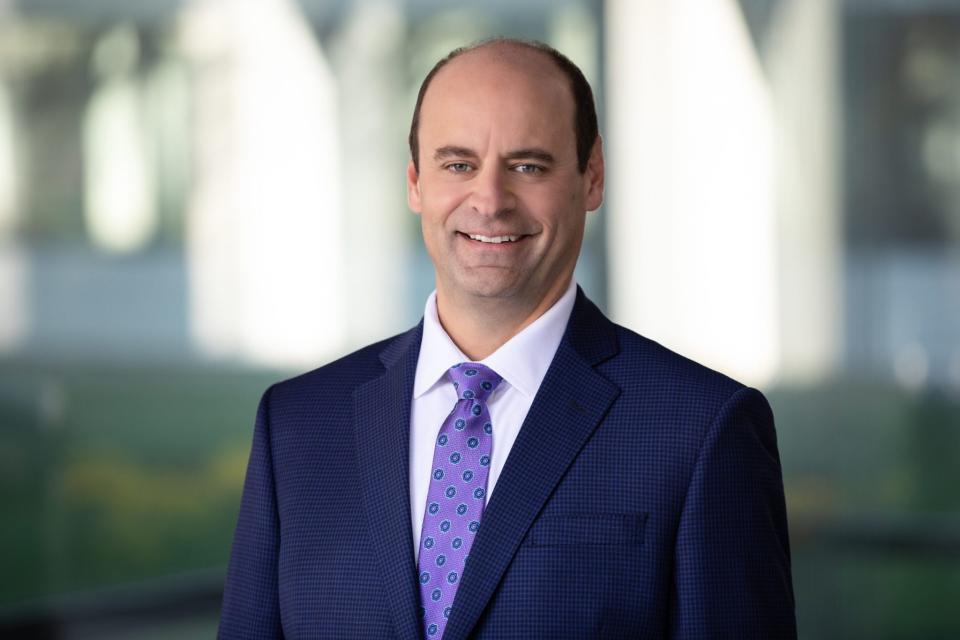Johnson & Johnson CIO says employee upskilling is key to transforming health care

When Jim Swanson rejoined Johnson & Johnson as chief information officer in 2019, after nearly 15 years away from the pharmaceuticals giant, he set three major goals.
Swanson sought to modernize J&J’s technology, ensuring the business had the right foundation of systems and data to propel a business worth over $375 billion today. He also wanted to “innovate for impact,” meaning he didn't just want to invest in the latest buzzy technology, but instead focus on technologies that would ultimately support better health outcomes.
For his third goal, he found inspiration in his own education. At Drexel University, Swanson earned a bachelor’s degree in bioscience and biotechnology, as well as a master’s degree in computer science. He's drawn to the combination of science and technology, and that's led him to encourage J&J's 130,000 workforce to add tech skills that are relevant to their area of focus.
“If you apply technology, coupled with people’s domain expertise, you can really reimagine and innovate versus just incrementally improve,” says Swanson, who was previously CIO at Monsanto, Bayer Crop Science, and for J&J's pharmaceuticals arm. “We've seen a lot of value in thinking about bilingual skills, even to the point that we build it into career paths and career journeys.”
To be bilingual, as Swanson defines it for the purposes of our conversation, is to have domain expertise as a scientist, or in departments from finance to marketing, and combine that knowledge with relevant tech insights. For such upskilling, employees can take interactive classes or watch videos that have been developed by J&J and external vendors.
Swanson shared a few examples of how bilingual employees are imperative to J&J's success and the company's mission. One is a research and development scientist who takes time to learn how to apply models that make it easier to identify molecules and can then accelerate research within a clinical setting. Another is a training specialist who adds augmented reality expertise and can therefore teach surgeons far faster than using traditional methods. Yet another is a finance employee who's adept at using forecasting models and can leverage them to drive meaningful insights that can support J&J’s business goals.
With forecasting, a mere one to two percentage point improvement in accuracy can create as much as $1.5 billion of financial improvement to a $90 billion company like J&J, Swanson says. "That is material for the company," he argues.
And while upskilling J&J’s workforce to better understand artificial intelligence is a priority, Swanson says adding tech skills is a lot broader than AI. Augmented reality and new technologies that help reimagine J&J's manufacturing processes are important too.
As part of its tech education push last year, J&J hosted its first global "day of learning" for all employees. It's also had success more broadly, getting nearly half of its workforce to use the company’s internal learning platform, J&J Learn. Meanwhile, employees using J&J's digital boot camp—courses that explain the fundamentals of AI, automation, data, and more—have completed nearly 30,000 courses. And around 20,000 workers have taken a generative AI training course, which is required for those who want to leverage that technology.
To foster a culture of learning, Swanson partners closely with senior leaders across J&J, as well as human resources chief Peter Fasolo, to align on the training content and tech skills the company wants for its workforce. Swanson first tested his vision to connect tech know-how with domain expertise within his own department of around 4,000 employees, before expanding his learnings to other corners of J&J.
“We're on a journey for sure and we're not done," says Swanson. "We have a lot more to do. And I wouldn't say we have perfection, but it really has taken momentum.”
John Kell
Send thoughts or suggestions to CIO Intelligence here.
This story was originally featured on Fortune.com

 Yahoo Finance
Yahoo Finance 